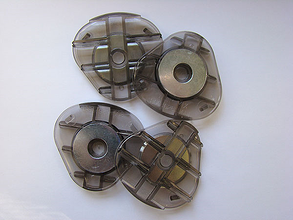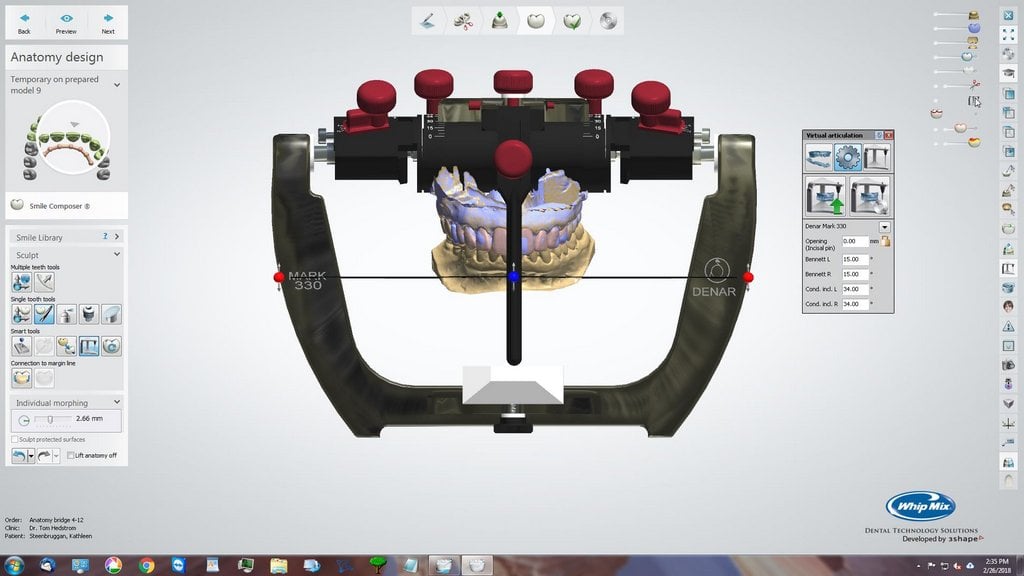 To the customer, many product changes seem quite simple."Oh, if they just change the mounting plate color from black to clear or charcoal, it should be easy". However, that just isn't the case, a change as simple as the color of a product can have a big impact on both the customer and product development teams.
To the customer, many product changes seem quite simple."Oh, if they just change the mounting plate color from black to clear or charcoal, it should be easy". However, that just isn't the case, a change as simple as the color of a product can have a big impact on both the customer and product development teams.
This is especially the case when we were challenged to design an articulator that was interchangeable within 20 microns; the devil was in the details. After all, the average human hair or grain of sand is 70 microns. Every element of the articulator went under the microscope to cut out manufacturing tolerances, shrink factors, and subjective processes. This led to the review and design of the plastic disposable magnetic mounting plate.
Plastic disposable mounting plates have been manufactured for years. The design of most mounting plates on the market up to that time had 4-points of contact. Structurally this meant there could be some instability with the plate, similar to a 4-legged table. You know what this means if you ever sat down at a restaurant only to find the table moves every time you raise or lower you arms. To achieve the goal of interchangeability within 20 microns, the magnetic mounting plate had to change.
To find the stability needed for this project, on had to look no further than the tripod, or in the case of the magnetic mounting plates - 3 points of contact. So a new plate was designed using the same durable plastic material with similar structural points to hold the magnet and provide the necessary suction for adhering stone. This new, 3-point contact, black magnetic mounting plate was introduced to the market in the fall of 2008 for use with the Denar Mark 330 semi-adjustable articulator.
The Need for Improvement
As customary at Whip Mix, Engineering and Marketing went on the road to see how this new articulator system was holding up in the field. Overall the product was well liked; however, in some cases the magnetic mounting plates were cracking in the labs. Upon further review, we found that some dental offices and laboratories were spraying the disposable plates with Pam to help prevent the stone from sticking, and the organic chemicals in the spray were attacking the polystyrene plate. This is a similar reaction to cleaning products that have been known to crack the dashboard of your vehicle. Back to the drawing board we went for continuous improvement of the mounting plate.
In the fall of 2010, a material change along with minor mold changes were made to strengthen the 3-point of contact magnetic mounting plate. The new material did not crack when sprayed with organic chemicals and brought a new, clear look to the plate. With a quick glance one was able to tell which magnetic plate worked for the current line of Denar and Hanau articulators (black), and which plate worked with the new Denar Mark 300 line of articulators (clear).
However, continuous improvement never rests. While this clear, magnetic mounting plate was working well for our customers, this new material was causing havoc with the molding operations. The clear material showed every bubble and crack in the plastic which didn’t really impact function but also didn’t give the appearance of the quality product that it was. In some cases the process gave the clear plate a yellow or spotted look. So back to the drawing board our Engineer went.
We found that by adding a small amount of gray color to our material, we were able to create a charcoal colored plate that greatly reduced the molding concerns from the clear plate.
So, in the fall of 2013, a new charcoal colored magnetic mounting plate were introduced for the Denar Mark 300 articulator series. This new magnetic plate works with the following models: Mark 330, Mark 320, Mark 310, and the LabRelator mounting instrument.













Leave a comment